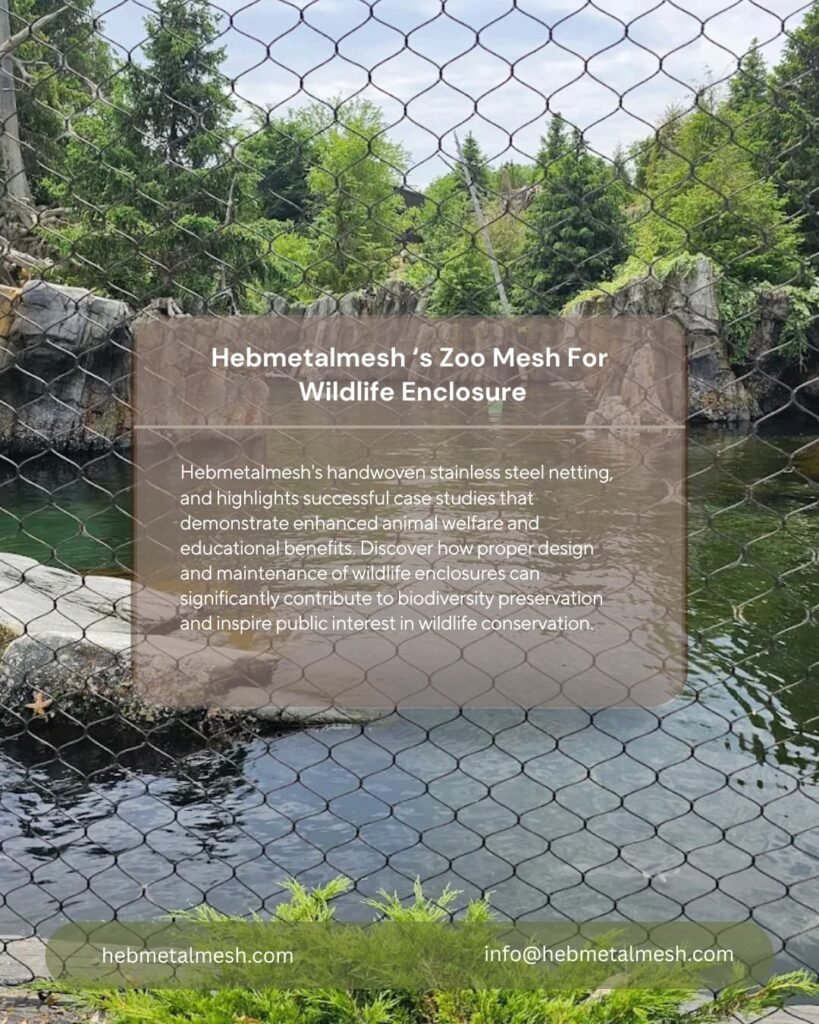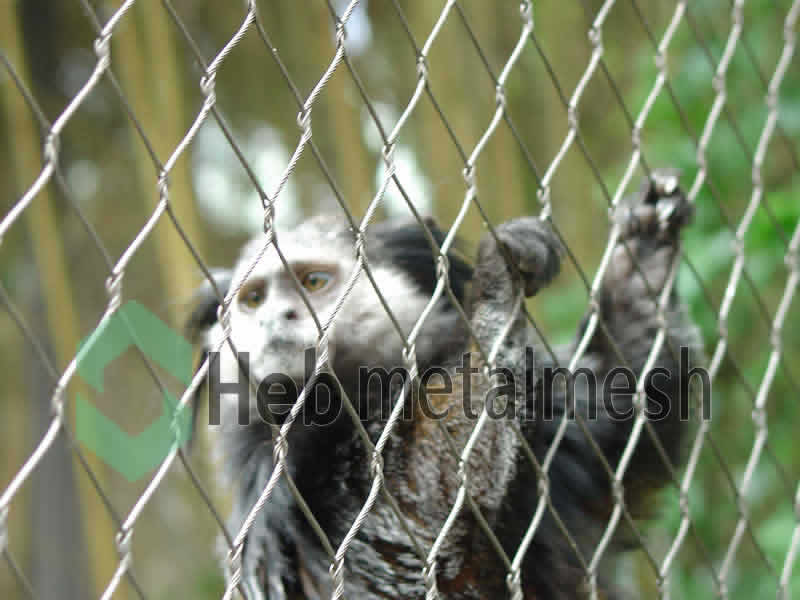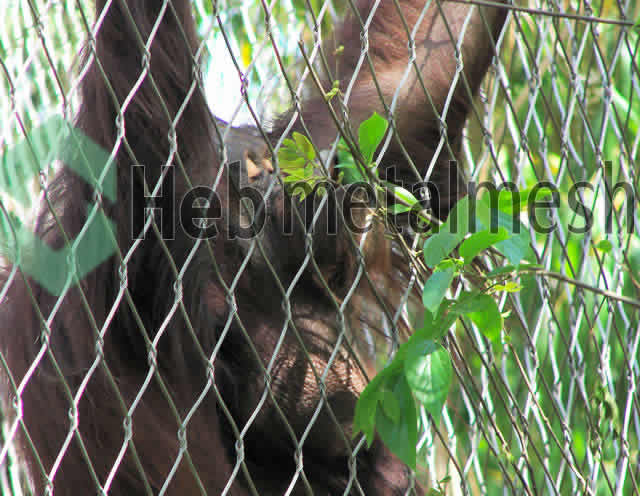Imagine stepping into a world where the harmony of nature unfolds before your eyes—a place where wildlife thrives in safety and splendor. “Exploring Wildlife Enclosures: The Ultimate Guide to Creating Safe Havens for Nature’s Wonders” invites you to embark on a captivating journey into the art and science of designing these vibrant ecosystems. Whether you’re a wildlife enthusiast, a budding conservationist, or a seasoned professional, this guide will equip you with essential insights and practical tips. Discover how to blend innovation and respect for nature to create enclosures that not only shelter animals but also educate and inspire visitors. From understanding habitat nuances to implementing sustainable practices, you’ll learn how to transform spaces into thriving sanctuaries. Join us as we delve into best practices and creative strategies, ensuring that the wonders of the wild are preserved and celebrated for generations to come.
Understanding Wildlife Enclosures: Definition and Purpose
Wildlife enclosures are specially designed spaces that aim to mimic natural habitats while providing a safe and controlled environment for animals. These enclosures serve multiple purposes, including conservation, education, and research. They can range from simple cages to elaborate, landscape-accurate habitats that allow animals to exhibit their natural behaviors. By creating spaces that closely resemble their natural environments, enclosures help to reduce stress and promote the well-being of the animals.
The primary purpose of wildlife enclosures is to protect and conserve species that might be endangered or threatened in the wild. These enclosures provide a sanctuary where animals can live without the threats of poaching, habitat destruction, or other dangers. Additionally, they play a critical role in breeding programs aimed at increasing population numbers and genetic diversity, thereby ensuring the survival of species that might otherwise face extinction.
Beyond conservation, wildlife enclosures also serve an educational role. They offer a unique opportunity for the public to learn about different species and the ecosystems they inhabit. By observing animals up close, visitors can gain a greater appreciation for wildlife and the importance of conservation efforts. This educational aspect fosters a connection between humans and nature, encouraging people to support and participate in wildlife preservation initiatives.
The Importance of Wildlife Conservation
Wildlife conservation is essential for maintaining biodiversity and the health of ecosystems around the world. As human activities continue to impact natural habitats, many species face the threat of extinction. Conservation efforts aim to protect these species and their environments, ensuring that ecosystems remain balanced and resilient. Healthy ecosystems provide numerous benefits, including clean air and water, fertile soil, and resources for human livelihoods.
One of the key reasons for wildlife conservation is to preserve the intricate web of life that sustains our planet. Each species plays a unique role in its ecosystem, and the loss of even a single species can have far-reaching consequences. For example, the decline of pollinators like bees can affect plant reproduction, leading to reduced crop yields and food shortages. By conserving wildlife, we help to maintain the natural processes that are crucial for the survival of all living beings.
Moreover, wildlife conservation has cultural and economic significance. Many communities around the world rely on wildlife for their livelihoods, whether through eco-tourism, hunting, or fishing. Preserving wildlife ensures that these communities can continue to benefit from the natural resources they depend on. Additionally, wildlife has intrinsic value, and the beauty and diversity of the natural world contribute to our quality of life. By protecting wildlife, we safeguard the heritage and well-being of future generations.
Key Elements of Effective Wildlife Enclosures
Creating effective wildlife enclosures requires careful consideration of several key elements. One of the most important factors is the design of the enclosure itself. The space should be large enough to allow animals to move freely and exhibit natural behaviors. It should also be enriched with features that stimulate the animals’ physical and mental well-being, such as climbing structures, water features, and hiding spots. The goal is to create an environment that closely resembles the animals’ natural habitat.
Another crucial element is the safety and security of the enclosure. This involves not only preventing the animals from escaping but also protecting them from potential threats such as predators, diseases, and human interference. Enclosures should be constructed with durable materials and equipped with secure fencing, locks, and surveillance systems. Additionally, regular maintenance and inspections are necessary to ensure that the enclosure remains in good condition and free of hazards.
Proper nutrition and healthcare are also vital components of effective wildlife enclosures. Animals should have access to a balanced diet that meets their nutritional needs, and their health should be monitored regularly by qualified veterinarians. This includes providing medical care, vaccinations, and treatments for any illnesses or injuries. By ensuring that animals receive the proper care and attention, we can help them thrive in captivity and maintain their overall well-being.
Designing a Wildlife Enclosure: Best Practices
Designing a wildlife enclosure requires a multidisciplinary approach that combines knowledge of animal behavior, ecology, architecture, and engineering. One of the best practices in enclosure design is to conduct thorough research on the species that will inhabit the space. This includes understanding their natural habitat, social structure, dietary needs, and behaviors. By gathering this information, designers can create environments that cater to the specific needs of the animals.
Another important aspect of enclosure design is the use of natural materials and elements. Incorporating plants, rocks, and water features can help to create a more authentic and enriching environment for the animals. These elements also provide opportunities for animals to engage in natural behaviors such as foraging, nesting, and exploring. Additionally, the use of natural materials can enhance the aesthetic appeal of the enclosure, making it more visually pleasing for visitors.
Sustainability is also a key consideration in the design of wildlife enclosures. This involves using eco-friendly materials and practices that minimize the environmental impact of the enclosure. For example, incorporating solar panels and rainwater harvesting systems can reduce energy and water consumption. Additionally, designers should consider the long-term maintenance and durability of the enclosure, ensuring that it can withstand the test of time and continue to provide a safe and enriching environment for the animals.
Types of Wildlife Enclosures: From Zoos to Sanctuaries
Wildlife enclosures come in various forms, each serving different purposes and catering to different needs. Zoos are perhaps the most well-known type of wildlife enclosure. They provide a space where the public can observe and learn about a wide variety of species. Modern zoos focus on conservation, education, and research, and they often participate in breeding programs to help preserve endangered species. The enclosures in zoos are designed to mimic natural habitats and provide enrichment for the animals.
Sanctuaries, on the other hand, are dedicated to providing a safe haven for animals that have been rescued from harmful situations, such as illegal wildlife trade, habitat destruction, or abuse. Unlike zoos, sanctuaries do not typically breed animals or keep them for public display. Instead, they focus on rehabilitation and providing a permanent home for animals that cannot be released back into the wild. The enclosures in sanctuaries are designed to prioritize the well-being and comfort of the animals, often with large, naturalistic spaces that allow for freedom of movement.
There are also specialized wildlife enclosures such as aquariums, aviaries, and wildlife parks. Aquariums house marine and freshwater species in carefully controlled environments that replicate their underwater habitats. Aviaries provide large, enclosed spaces for birds to fly and exhibit natural behaviors. Wildlife parks, similar to zoos, offer visitors the chance to observe animals in spacious, naturalistic enclosures. Each type of wildlife enclosure plays a unique role in conservation and education, contributing to the overall effort to protect and preserve wildlife.
Legal Considerations in Creating Wildlife Enclosures
Creating wildlife enclosures involves navigating a complex web of legal considerations and regulations. These laws are designed to ensure the safety and well-being of both the animals and the public. One of the primary legal requirements is obtaining the necessary permits and licenses to operate a wildlife enclosure. This often involves demonstrating that the facility meets specific standards for animal care, enclosure design, and security.
Animal welfare laws play a crucial role in the creation and management of wildlife enclosures. These laws set minimum standards for the treatment and care of animals, including requirements for nutrition, housing, and veterinary care. Enclosure operators must comply with these regulations to ensure that the animals are kept in humane conditions. Failure to adhere to animal welfare laws can result in fines, closure of the facility, and confiscation of the animals.
Environmental regulations also impact the creation of wildlife enclosures. These regulations aim to protect natural habitats and ecosystems from the potential negative effects of enclosure construction and operation. For example, facilities may be required to conduct environmental impact assessments to evaluate how the enclosure will affect local wildlife and ecosystems. Additionally, there may be restrictions on the use of certain materials or practices that could harm the environment. Compliance with these regulations is essential to minimize the ecological footprint of wildlife enclosures.
The Role of Technology in Wildlife Enclosure Management
Technology plays an increasingly important role in the management of wildlife enclosures, offering innovative solutions to enhance animal care, security, and visitor experience. One of the key applications of technology is in monitoring and tracking animal health and behavior. Advanced sensors and cameras can provide real-time data on the animals’ movements, diet, and physiological conditions. This information allows caretakers to detect early signs of illness or stress and respond promptly with appropriate interventions.
Another significant technological advancement is the use of automated systems to manage enclosure environments. Climate control systems can regulate temperature, humidity, and lighting to create optimal conditions for the animals. Automated feeding systems ensure that animals receive the right amount of food at the right times, reducing the risk of overfeeding or underfeeding. Additionally, water filtration systems help maintain clean and healthy aquatic environments for marine species.
Technology also enhances the educational and interactive aspects of wildlife enclosures. Virtual and augmented reality experiences allow visitors to engage with wildlife in immersive and informative ways. Interactive displays and mobile apps can provide detailed information about the animals and their habitats, enriching the visitor experience. Furthermore, technology can facilitate remote viewing and virtual tours, making wildlife enclosures accessible to a global audience and raising awareness about conservation efforts.
Engaging the Community: Education and Awareness
Engaging the community through education and awareness is a vital component of wildlife enclosures. By fostering a connection between people and wildlife, enclosures can inspire a sense of stewardship and encourage active participation in conservation efforts. One of the most effective ways to engage the community is through educational programs and activities. These can include guided tours, workshops, and interactive exhibits that provide valuable insights into the lives and habitats of the animals.
School programs and partnerships with educational institutions are also important for reaching younger audiences and instilling a passion for wildlife conservation. Wildlife enclosures can offer field trips, educational materials, and collaboration opportunities with teachers and students. By integrating wildlife education into the curriculum, schools can help nurture the next generation of conservationists who will continue to advocate for and protect wildlife.
Community outreach and involvement are essential for building support and raising awareness about conservation issues. Wildlife enclosures can host events, fundraisers, and volunteer programs that encourage community members to get involved. Social media and online platforms provide additional avenues for outreach, allowing enclosures to share updates, stories, and educational content with a wider audience. By engaging the community, wildlife enclosures can create a network of advocates who are committed to preserving nature’s wonders.
Case Studies: Successful Wildlife Enclosures Around the World
Examining successful wildlife enclosures around the world provides valuable insights into best practices and innovative approaches to conservation. One notable example is the San Diego Zoo in California, USA. Renowned for its expansive and naturalistic enclosures, the San Diego Zoo focuses on creating environments that closely resemble the animals’ natural habitats. The zoo’s Safari Park, in particular, offers large, open spaces where animals can roam freely, promoting natural behaviors and social interactions.
Another exemplary wildlife enclosure is the Singapore Zoo, known for its “open concept” design. The zoo utilizes hidden barriers such as moats, glass, and vegetation to create the illusion of an unobstructed, natural environment. This design not only enhances the aesthetic appeal of the enclosures but also provides a more immersive experience for visitors. The Singapore Zoo also emphasizes conservation and education, with programs that raise awareness about endangered species and the importance of protecting their habitats.
The David Sheldrick Wildlife Trust in Kenya is a leading example of a sanctuary dedicated to the rehabilitation and conservation of orphaned elephants. The trust provides a safe haven for young elephants that have lost their families due to poaching or habitat destruction. The enclosures are designed to support the physical and emotional well-being of the elephants, with spacious areas for them to play and interact. The trust’s successful rehabilitation program has enabled many elephants to be reintroduced into the wild, contributing to the conservation of this iconic species.
Conclusion: The Future of Wildlife Enclosures and Conservation Efforts
The future of wildlife enclosures and conservation efforts holds promising potential for the preservation of nature’s wonders. As our understanding of animal behavior and ecology continues to grow, so too does our ability to create more effective and enriching environments for wildlife. Advances in technology, sustainable design practices, and community engagement will play pivotal roles in shaping the next generation of wildlife enclosures.
One of the key trends in the future of wildlife enclosures is the emphasis on creating more naturalistic and expansive habitats. The goal is to provide animals with environments that closely mimic their natural homes, allowing them to exhibit natural behaviors and thrive. This approach not only benefits the animals but also enhances the educational and immersive experience for visitors, fostering a deeper connection with wildlife.
Sustainability will also be a driving force in the future of wildlife enclosures. As the global community becomes more aware of the environmental impact of human activities, there is a growing commitment to adopting eco-friendly practices. Wildlife enclosures will increasingly incorporate green technologies, renewable energy sources, and sustainable materials to minimize their ecological footprint. This shift towards sustainability will ensure that conservation efforts are aligned with broader environmental goals.
Ultimately, the success of wildlife enclosures and conservation efforts depends on the collective commitment of individuals, communities, and organizations. By working together and embracing innovative approaches, we can create safe havens for wildlife and ensure that the wonders of the natural world are preserved for generations to come. As stewards of the planet, it is our responsibility to protect and nurture the diverse species that share our world, creating a future where wildlife can thrive in harmony with humans.


